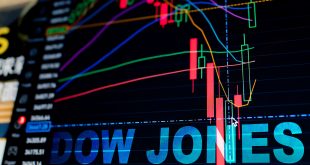The annual CPI forecast to be unchanged at 8.3% in May. Core prices expected to drop to 5.9% from 6.2%. Steep oil and fuel price gains in May could push inflation risk upward. Fed tightening policy will be unchanged and eventually markets are expected to react to differentials.
April’s small decline in headline inflation, the first since last August, may be headed for forgetfulness in May as oil prices resumed their ascent with a 7.0% gain. The Consumer Price Index is anticipated to continue at 8.3% after April’s inflation rate dropped from a 40 year high at 8.5% in March. Monthly prices are projected to rise 0.7%, more than double their 0.3% gain in April.
Core inflation, without the food and energy costs that have been in advance of general prices for more than a year, is expected to fall to 5.9% from 6.2% in April. The month’s increase is predicted to be 0.5%, just below the 0.6% gain in April.
Increases in the Producer Price Index (PPI) in the US have led CPI since January 2021 and have been forerunners of the gains in retail expenses. The generalized inflationary environment during 2021 has reduced the prior tendency for producers and retailers to absorb a portion of manufacturing and distribution price increases to maintain market share for their products and stores.
Annual producer prices rose 11% for the year in April, and even though the May increase is expected to ebb to 10.7%, there is a considerable backlog of previous gains that have not been passed on to consumers. These prices will continue to filter through from the Producer Price Index (PPI) to the consumer index.
Asset Market Reactions
Even though Fed policy for at least the next two meetings will not be affected by the CPI results for May or June, there is considerable room for a market response depending on the deviation from forecasts. Market risk lies primarily with a higher than predicted inflation number. There are good reasons to suspect that a portion of the May oil and gas price increases were not captured in the analysts surveys that produce the forecasts.
Treasury rates
Treasury rates recovered from their swoon in the last two weeks of May. The yield on the 10-year Treasury has closed above 3.0% in two of the last four sessions and a higher-than-expected figure for May CPI could send the return on this commercial benchmark above the prior closing high of 3.13%.
A weaker than forecast CPI result will not push this or other Treasury yields lower for the plain reason that the Fed will be hiking rates for this year based on already existing inflation.
Currencies
The dollar has been mixed of late, rising sharply against the yen and the Bank of Japan’s (BoJ) moribund rate policy, but losing ground versus the euro and the ECB’s prospective policy change this month and next. The greenback has lost points against the Canadian dollar as oil prices have soared above $120.00.
Stronger American inflation plays to higher US interest rates, both immediately in the credit markets and long-term, in a potential higher endpoint for the Fed. Either way the most sensitive pair is the USD/JPY, though higher rates are an overall plus for the dollar.
US Equities
Equities have largely priced in the Fed’s rate policy but higher inflation is a looming threat to the remaining percentage points of economic growth. The latest Atlanta Fed GDP estimate is 0.9% for the second quarter. It would not take much of a contraction in consumer spending, perhaps made necessary by shrinking purchasing power, to push the economy into a second quarter of decline and recession. The inflation threat to growth is an unpriced problem for equities. Translation: higher inflation, lower stocks.
Oil’s Rection
From March to April the average price of West Texas Intermediate (WTI), the North American crude oil standard, fell 5.2%. This helped to account for the decline in the consumer index from 8.5% to 8.3%. Because oil is such a ubiquitous industrial commodity, present in nearly all production and distribution endeavors, its price effect is much wider than can be eliminated by simply excluding its immediate costs as core inflation gauges do. From March to April core CPI fell from 6.5% to 6.2%, slightly more than the overall index.
Oil prices reversed in May. The average price for a barrel of WTI last month was 7.0% higher than in April with much of the increase coming in the second half of the month, unpredicted and unincorporated in analysts’ estimates.
Fuel prices were also climbing in May. The national average for a gallon of regular fuel jumped 10.6% from the first week of the month to the last. That surge was likely not captured by the survey predictions formulated early in the month.
Policy Front
Next week’s FOMC meeting on June 15 will also produce the bank’s second rate, inflation and GDP estimates for this year. In March the fed funds rate was expected to be at 1.9% at year end, with PCE inflation at 4.3%, core at 4.1% and GDP at 2.8%. It is safe to say that the first three will be higher and the last lower next week. The evolution will tell markets what the governors’ current thinking may be, but the Fed has been playing catch-up on inflation for more than a year and its predictions have been well behind reality. Most important will be the so-called central tendency for the fed funds rate. Anything less than 3.0% will be a big surprise.

CPI
 Noor Trends News, Technical Analysis, Educational Tools and Recommendations
Noor Trends News, Technical Analysis, Educational Tools and Recommendations




